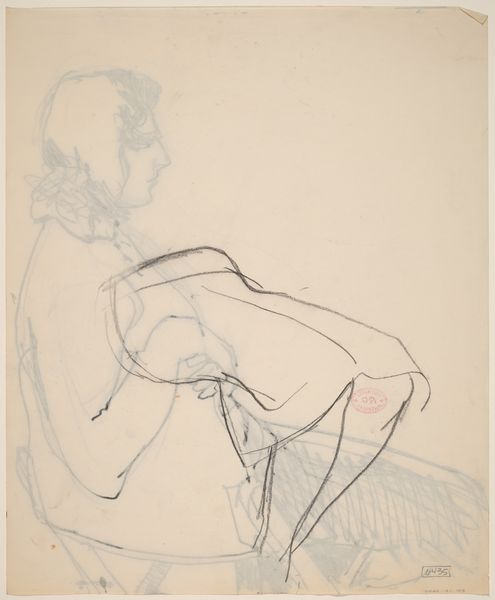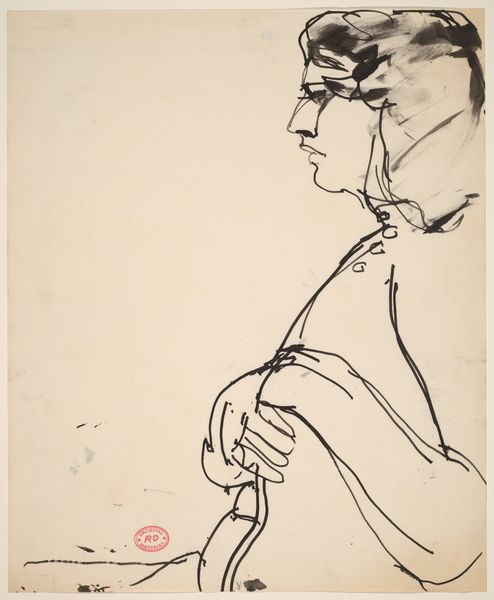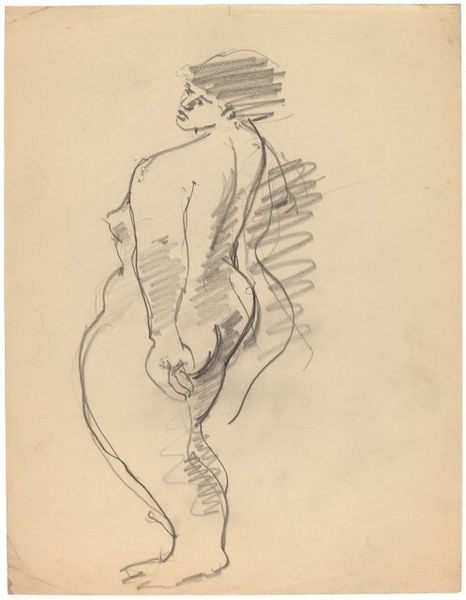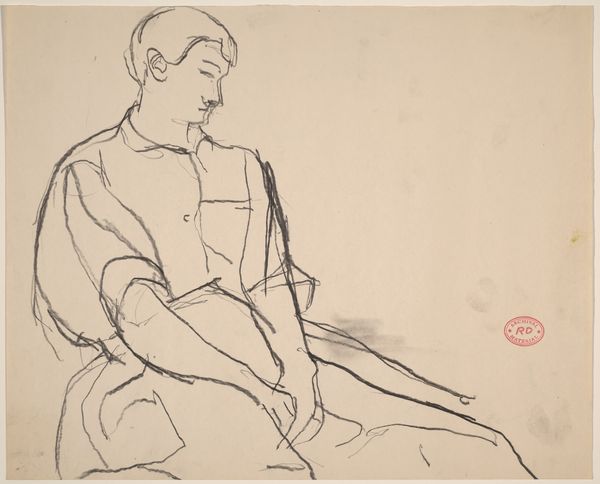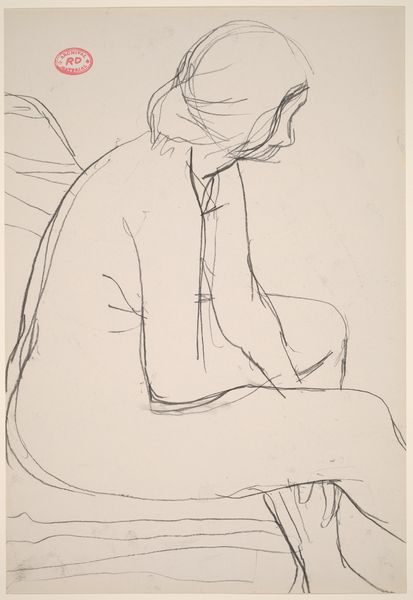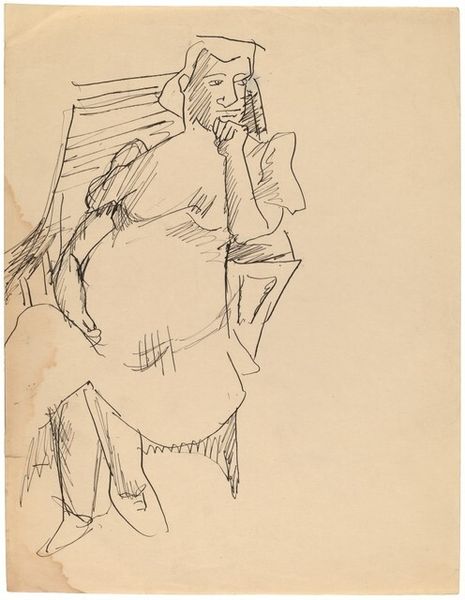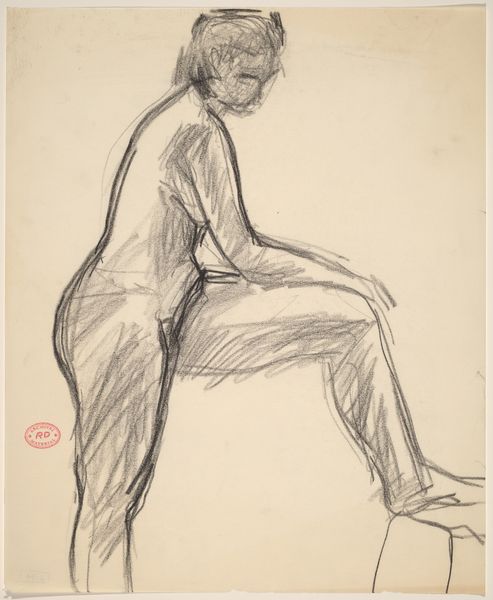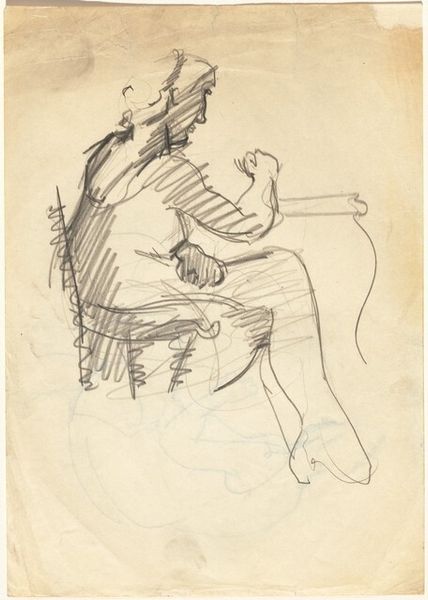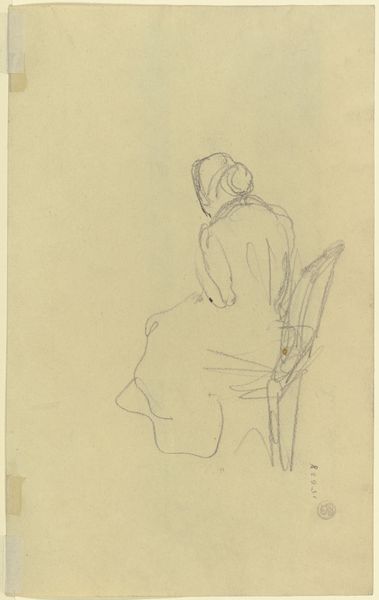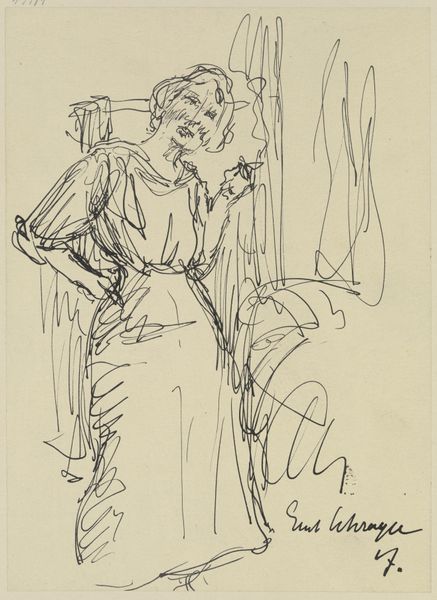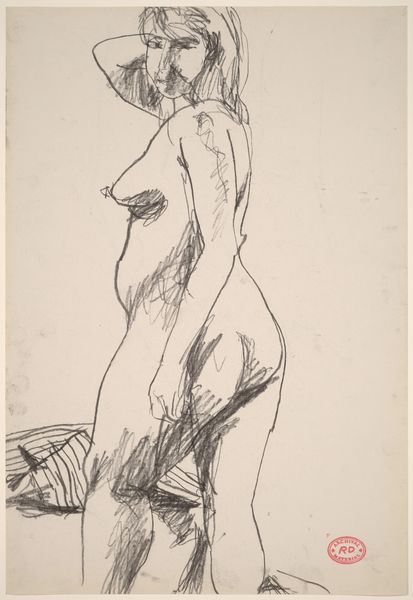![Untitled [side view of a seated woman] by Richard Diebenkorn](/_next/image?url=https%3A%2F%2Fd2w8kbdekdi1gv.cloudfront.net%2FeyJidWNrZXQiOiAiYXJ0ZXJhLWltYWdlcy1idWNrZXQiLCAia2V5IjogImFydHdvcmtzLzI5ZjQ0NjBkLWU0ZTgtNDM5Yi1iZmI2LTllYTM1OWQ0OTJiNS8yOWY0NDYwZC1lNGU4LTQzOWItYmZiNi05ZWEzNTlkNDkyYjVfZnVsbC5qcGciLCAiZWRpdHMiOiB7InJlc2l6ZSI6IHsid2lkdGgiOiAxOTIwLCAiaGVpZ2h0IjogMTkyMCwgImZpdCI6ICJpbnNpZGUifX19&w=3840&q=75)
drawing, ink, pen
#
portrait
#
drawing
#
ink drawing
#
self-portrait
#
pen sketch
#
figuration
#
bay-area-figurative-movement
#
ink
#
pen
Dimensions: overall: 43.2 x 35.6 cm (17 x 14 in.)
Copyright: National Gallery of Art: CC0 1.0
Curator: Immediately, I’m struck by the sketch-like quality, the starkness of the black lines against the pale paper. It's unfinished in a way, but very direct. Editor: Indeed. We're looking at "Untitled [side view of a seated woman]," a drawing made with pen and ink, likely between 1955 and 1967, by Richard Diebenkorn. It presents a side profile of a seated woman. What can you tell us about its context and the labor involved in its production? Curator: Well, Diebenkorn's drawings of this period often served as studies for his larger paintings, allowing him to explore the human form, light, and composition on a smaller scale. This piece, with its visible linework and sparse detail, reflects the immediacy of the artistic process. Consider the accessibility of ink and paper; how they facilitated both spontaneous gesture and the methodical development of ideas that would come to fruition in painting. The choice of material speaks to an element of experimentation and a desire to capture ephemeral moments. Editor: I see how you read that into it. The line quality varies considerably. Some marks are delicate and fleeting, suggesting a tentative search for form, while others are bold and decisive, firmly establishing contours. Look at how the parallel strokes that define the woman’s dress or blanket create depth, while the spare use of line elsewhere flattens the picture plane. This interplay is quite sophisticated. Curator: Absolutely. Moreover, this work gives a hint as to Diebenkorn's influences and access to different material production methods. The availability and widespread use of drawing materials—pen and ink—speaks volumes about artistic resources during the mid-20th century and his capability to make these studies using those basic materials. Editor: I see how that fits. Looking again at the drawing itself, I’m intrigued by the figure’s averted gaze, suggesting a sense of introspection or detachment. What emotions do you find at play? Curator: Perhaps it expresses isolation given how the industrial boom was changing societal relationships. Even with all its marks and line variation it feels restrained... Editor: Despite being "unfinished," as I said, it is also deeply intentional. Thank you for your material insights. Curator: And thank you for prompting closer visual examination. This drawing encapsulates much about that mid-century period's spirit and art production as a study for final piece.
Comments
No comments
Be the first to comment and join the conversation on the ultimate creative platform.
